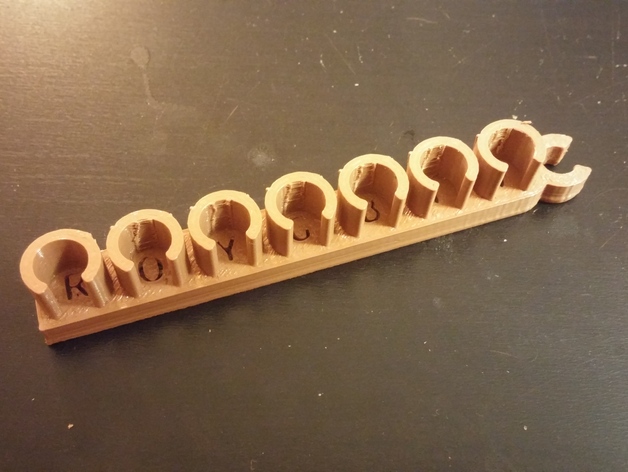
Gayola Mark 2
thingiverse
What would you say is the most prevalent issue plaguing today’s elementary school students? Lack of teaching resources? Unqualified teachers? A fundamentally flawed education system? If you guessed any of these, then you’d be more wrong than a fourth grader writing block letters on his cursive writing exam. In fact according to fictional 2012 study in Michigan school systems, the number one problem affecting youth between the ages of 4 and 8 is homophobia. Much like Ronald Reagan tore down Berlin wall to unite East and West Germany in 1987, the Mark II will be the great equalizer that will raze the barriers of gender-normative prejudice and unite this nation’s youth. It was with this inspiration that the Gayola Mark II was created. The Mark II allows students express their thoughts and ideas like never before as it allows students to add on not one but seven different colors in the form of crayon attachments to their primary writing utensil. The Mark II pops onto a pencil in the end socket somewhere at the middle of the pencil. Then crayons must be individually popped into each socket and the tool can be used write with up to 7 different colors in addition to your base writing tool. While the Mark II t was designed for male students, the Mcgill 3D Printing team firmly believes in equal opportunity for all genders. For this reason, a female equivalent is currently in the works and will feature characteristic qualities such as woodworking and flannel shirts. Print Settings Printer Brand: MakerBot Printer: MakerBot Replicator 2 Rafts: No Supports: No How I Designed This Designing the Gayola Mark II was a project that pushed 3D printing and CADing to the very limits of our system’s capabilities. At times in the process of creating this revolutionary device, I noticed that the design flickered between the traditional 3D model and a version that transcended the original design by attempting to claw its way into a fourth dimension. Luckily with some magic in Solidworks, a firm bulge in my pants, and a pocket full of dreams, we were able to confine it to a simple three-dimensional design. The design started with a rectangular base that would serve as the base for the addition of circular shaft columns that would house the crayons. The design needed to have several key components: a place where the pencil or guide object would be attached for the writer to grasp, seven distinct locations where crayons can be locked in and connections between these parts. The rectangular base served as the connection between these components. The writing utensil location component was placed level with the rectangular base so that the model would print easily with that side as the bottom. The holder is essentially a circle of radius slightly smaller than that of a pencil with a section of the circle cut out. The pencil can then be pushed in to the socket and because the socket is slightly smaller, the shaft of the pencil should in effect “lock in” place. A similar strategy was used in designing the crayon sockets as the same principles apply to the waxy, more malleable shaft of crayons because the socket’s ability to pop, lock, and drop a shaft into its gaping opening is not particularly affected by the type of shaft. Color indicators were also included at the top of each crayon shaft in a form of a letter to follow the traditional rainbow color scheme, however this is in no way an effort to impose our homo-normative ideals onto students and are merely a guideline for the gender-identity confused.
With this file you will be able to print Gayola Mark 2 with your 3D printer. Click on the button and save the file on your computer to work, edit or customize your design. You can also find more 3D designs for printers on Gayola Mark 2.
